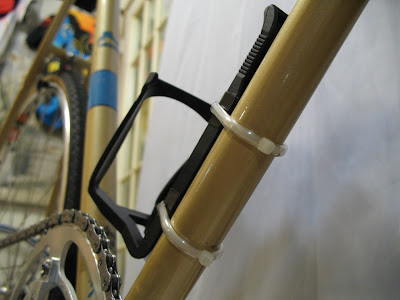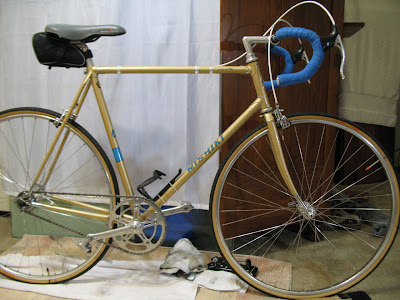At the end of the day, what makes any system a success is the way motorists react to you. I almost always get 5 ft, and many times, as much room as a small car now. What makes the addition of this Blackburn MARS 3.0 light so effective, is it's made to provide good lighting as motorists close and pass.
Taillights with very narrow beams are exactly what you want for the "G" in G.I.T - to Grab motorists attention from a long way off, and for that I just upgraded my half watt Planet Bike Superflash to a 1 watt Superflash Turbo, and it's a substantial upgrade. In fairness, the Blackburn MARS 4.0 looks comparable. The mounting bracket slots aren't compatible though, so it was easier for me to stick with PB.
As drivers close to within 100 yards, they start to fall out of the field of view of those very narrow beams, and cyclists are getting hit in spite of having bright taillights because the motorists lose sight of them as they come along side to pass. The MARS 3.0 was designed to eliminate this lighting system weakness.
I left the optic fiber ribbon on the helmet, but turned it forward so it silhouettes the helmet, thus addressing the "I" in G.I.T Lit - IDENTIFY. With both the helmet lights flashing in synch, and with the PB Superflash Turbo flashing it's own separate and distinct pattern, and the MagicShine lighting the road and front of the bike, it's obvious from the way motorists are reacting that they understand within a second or two that they are looking at a bicycle.
This lighting system has produced a bigger change in motorists behavior than anything since wearing a helmet and Spandex shorts back in the late 1970s. When Quad-Cab diesel dualies towing backhoes are leaving 8-10 feet when passing, and watching in their mirrors before pulling back into your lane, you've got yourself one hell of a lighting system.
A jersey or jacket with reflective piping would only add to that, but at this point, it's really unnecessary. This system IDs you as a bicycle almost instantly, so motorists know what to expect from you, and how they might need to react. You can almost hear the sigh of relief as they pass. Lots of friendly waves, smiles and curiosity. They really don't want to run you over on the way home, and they seem to genuinely appreciate how easy this system makes their job.
 |
| Spongy rubber strip rolled up and wrapped in electrical tape, and a wooden dowel. No beauty awards, but very, very effective and helps keep the front of my helmet up in the bargain! |
Mount the light facing straight back. As you lower your head, down in the drops (or aerobars), you're still be looking straight ahead, so the helmet's always going to be level. Your neck makes the adjustment for you.
When you turn your head to clear a turn, or look at a driveway, a helmet light queues motorists about your intentions, and the ribbon's silhouetting really improves this feature of helmet-mounted lighting. Just remember, you can always turn your head sideways to make the helmet more visible to oncoming traffic, or cars coming out of driveways. It works like magic!
 |
| The metal pin shown here allows you to turn the light slightly towards the driver. A good idea IMHO. |
Sanyo eneloop NiMH rechargeable batteries. They don't self-discharge like regular NiMH, so if you don't use the light for a month or 6, no problem, the batteries will still work just fine for
UPDATE: 3/8/2012: The claims that this, and many other taillights, will go for 50 hrs in constant, and 150 hrs in flashing mode are complete and total lies. You can easily prove this for yourself. Simply turn the light on and observe that after 12 hrs the light is so degraded it's no longer effective. Since flashing mode uses 2 additional LEDs on Planet Bike's SuperFlash, and SuperFlash Turbo, don't expect more than 24 hrs out of those in flash mode.
After doing my own fatigue test, my life flashed before my eyes about a dozen times as I realized that on those occasions, the reason cars crowded me is my taillights were far, far too dim to provide adequate coverage. Not a great feeling.











